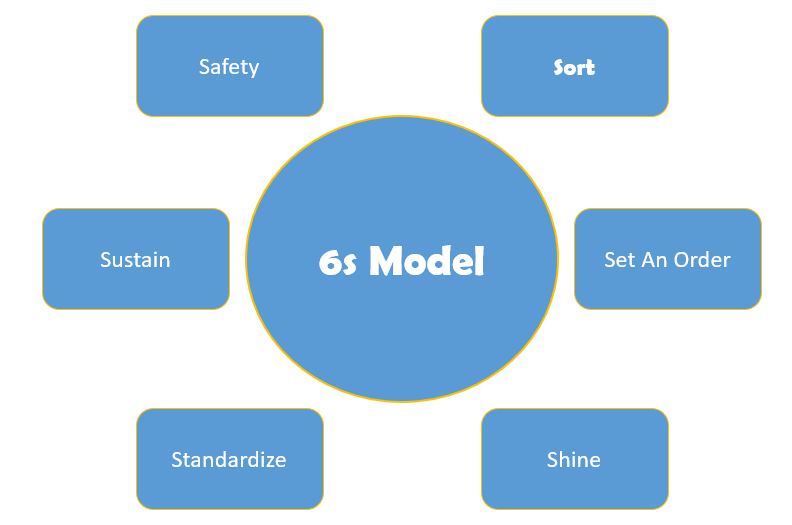6S has long been part of successful manufacturing processes. A natural extension is applying these principles in warehousing and distribution. The pillars of 6S are:
- Sort – eliminate whatever is not needed
- Set In Order – organize, identify and arrange everything in a work area
- Shine – regular cleaning and maintenance
- Standardize – make it easy to maintain; simplify and standardize
- Sustain – maintaining what has been accomplished
- Safety – create a safe work environment
At its core 6S supports establishing a visual workplace and is a part of Kaizen — a system of continual improvement —a component of getting lean.
The 6S program focuses on having visual order, organization, cleanliness and standardization. The results you can expect from a 6S program are improved profitability, efficiency, service and safety.
APICS, a leading authority on continuous improvement describe 6S as ‘having a place for everything and keeping everything in its place’. Essentially, 6S helps maintain a clean and ordering operation to help improve productivity and reduce waste.
When applying the 6S model in your warehouse consider the following:
Mark aisles, storage, and work areas.
Work flows more fluidly through the facility when aisles, storage sections and processing functions are clearly marked and maintained. A dirty, cluttered and disorganized facility is invariably more costly to operate. It doesn’t take much to mark aisle boundaries with a yellow line. Even if the layout if not ideal, at least you will have some indication if pallets and equipment are miss-stored and potentially blocking work flow.
Keep things clean
Keeping things clean helps support pride in workmanship and improves safety. At a minimum buy a large rugged garbage can, shop broom and dust pan to place at the end of every other aisle. This will allow operators, managers and other employees to keep the aisle clear of debris. Some companies go so far as assigning specific sections of the warehouse to a team and post the team information at the end of the aisles. The teams are responsible for keeping their sections clean and maintained.
Stop, Look, and Point
Stop, Look, and Point. Safety starts with ensuring people are aware of their surroundings and the potential risks involved. Stop, Look, and Point is a practice they adopted from Toyota
- Stop… walking…so you can focus on your surroundings
- Look… in all directions of vehicle traffic including both ways on a one way lane
- Point… after making eye contact with any lift driver(s), use visual pointing to indicate which way both/all are intending to go,
indicate who is yielding right of way and confirm the pedestrian(s) given right of way proceeds
To help reduce confusion and inefficiency make certain to implement a bin numbering system that can be used to easily and systematically identify each warehouse bin. A numbering schema utilizing some form of identification for the zone, aisle, bay, level, and position is ideal. Additionally, all bins should have a common reference point to allow an operator to generally identify a bin.
